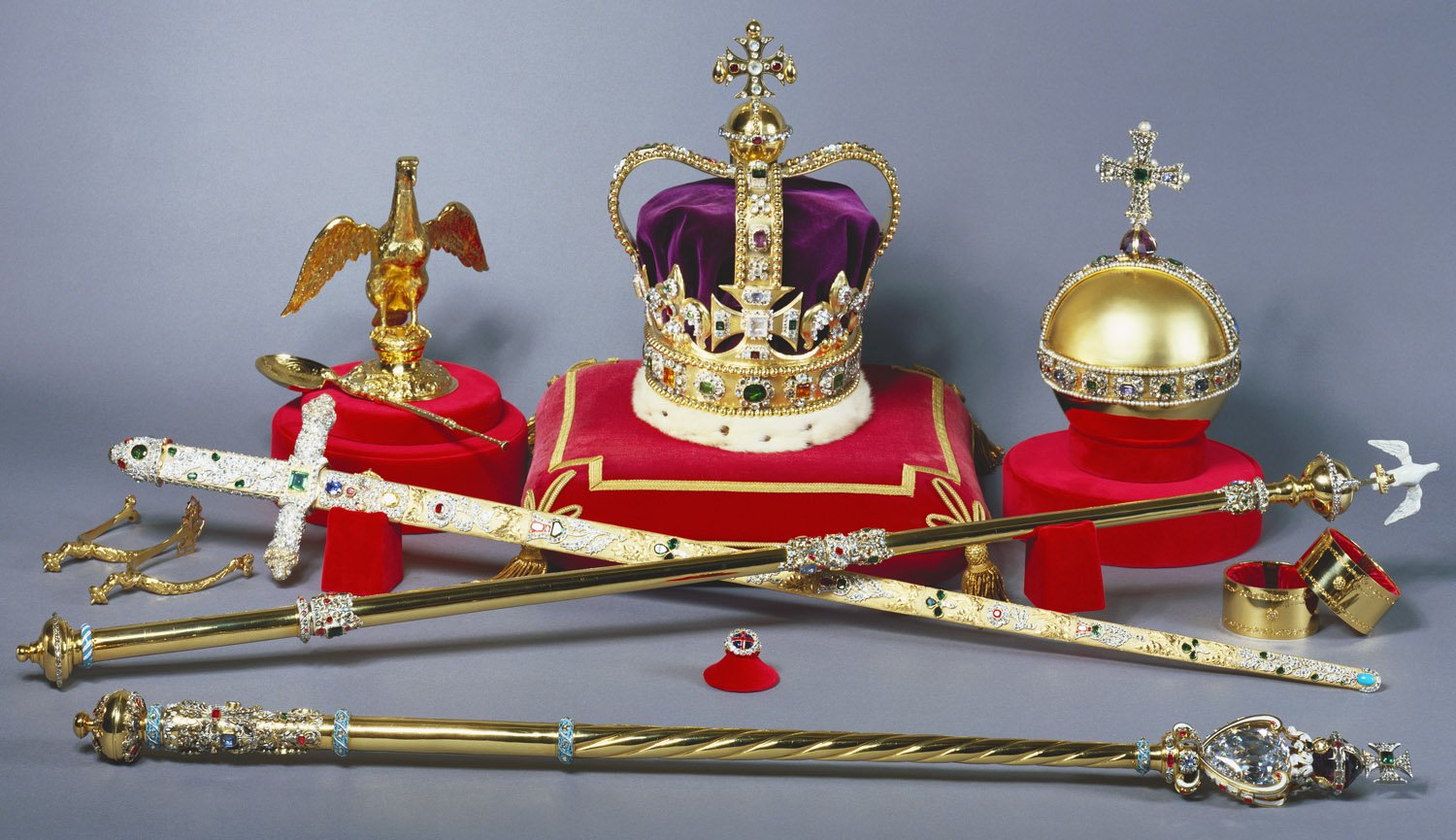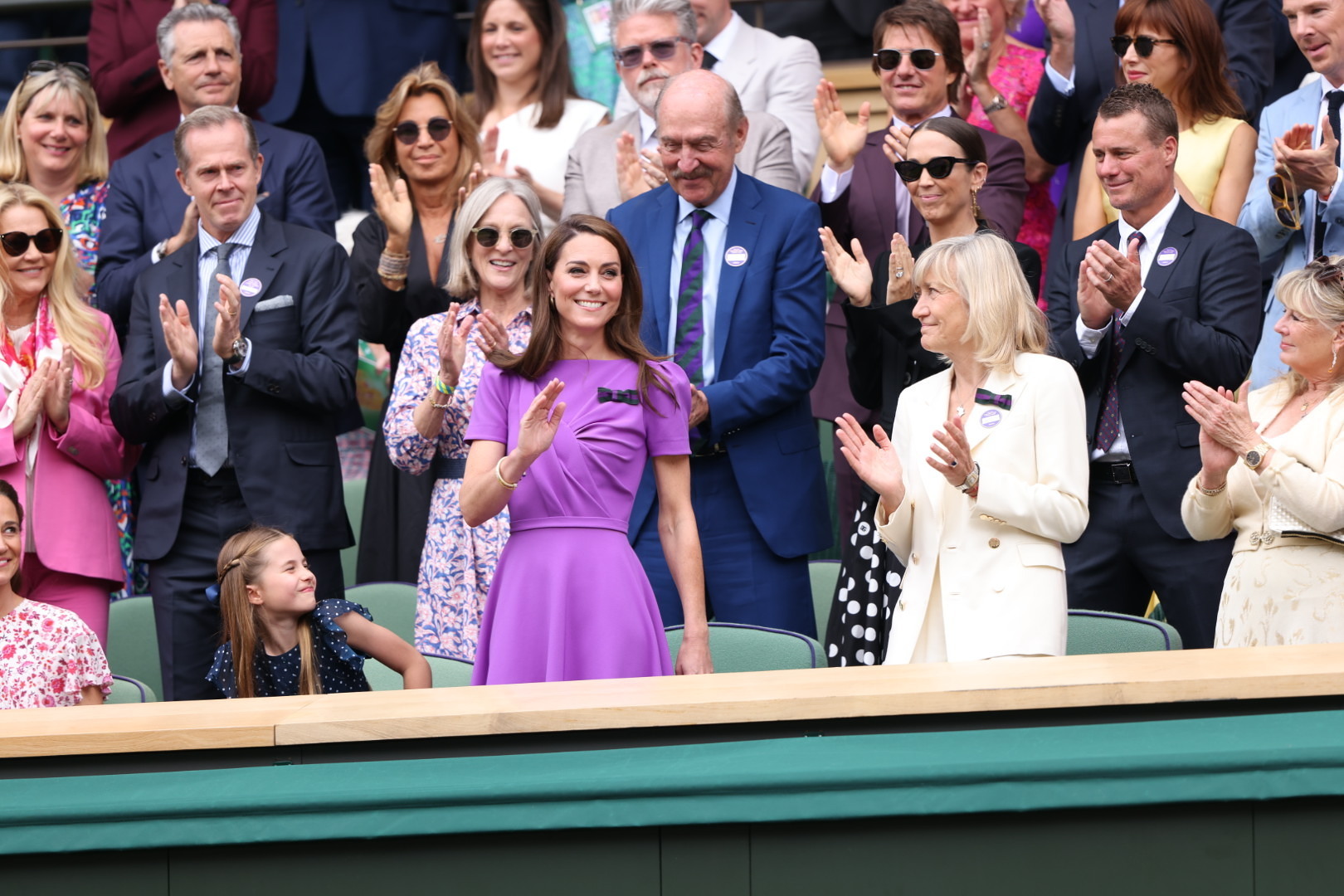Seen as two of the most authoritative Monarchical symbols, the orb and sceptre are used at the coronation of each new Sovereign, full of symbolism and power. But why are they used and what do they mean?
The Sovereign’s Orb:
The Sovereign’s Orb, as this part of the Crown Jewels is officially named, is a symbol of Godly power. A cross above a globe, it represents ‘Christ’s dominion over the world’, as the Monarch is God’s representative on Earth.
Made for Charles II’s coronation in 1661, the orb is a 30cm-wide hollow gold sphere, mounted with nine emeralds, 18 rubies, nine sapphires, 365 diamonds, 375 pearls, one amethyst and one glass stone. The pearls divide the orb into three sections, which represent the three continents medieval rulers believed existed. The orb weighs 1.32 kg (roughly 43 oz).

The Sovereign’s Orb – part of the Crown Jewels – features hundreds of precious stones and represents God’s power on Earth (Royal Collection Trust/© Her Majesty Queen Elizabeth II 2016)
Charles II spent £1,150 to have this single piece created by royal goldsmith Robert Viner, after Oliver Cromwell melted down the Crown Jewels during the Interregnum of 1649-1660; Garrard fitted the stones. Originally, the orb was decorated with imitation pearls but these were replaced in 1930; it has been used at every coronation since.
Taken from the Royal Collection Trust’s website, the orb is described as follows: “The monde [the attachment between the cross and the sphere] is an octagonal step-cut amethyst, surmounted by a cross set with rose-cut diamonds, with a table-cut sapphire in the centre on one side and an emerald on the other, and with pearls at the angles and at the end of each arm.
“…clusters of emeralds, rubies and sapphires [are] surrounded by rose-cut diamonds, each in a champleve enamel mount, between single rows of pearls.”
— Royal Rewind: coronation of Elizabeth II —
It is presented to the Sovereign after they put on the Imperial Robe. The orb is brought from the altar by the Dean of Westminster, and given to the Archbishop of Canterbury to place into the Monarch’s right hand. There he says: “Receive this orb set under the cross, and remember that the whole world is subject to the Power and Empire of Christ our Redeemer.”

The Crown Jewels are comprised of pieces, including St Edwards Crown, the orb and sceptre (Royal Collection Trust/© Her Majesty Queen Elizabeth II 2016)
The Sovereign’s Sceptre:
The Sovereign’s sceptre is one of two sceptres used in the coronation ceremony, and is also known as the Sovereign’s sceptre with the cross, representing the temporal power of The King or Queen, and is associated with good governance.
Measuring 92 cm, the sceptre holds the world’s largest diamond, the Cullinan I, also known as the First Star of Africa. Found in South Africa in 1905, it was gifted to Edward VII in 1907 to help mend relations between Britain and South Africa after the Boer War; then it was cleaved in Amsterdam, eventually into nine parts, and 97 smaller brilliant diamonds. The largest part – a whopping 530 carats – was set into the sceptre in 1910, and first used at George V’s coronation.

The Sovereigns Sceptre with cross features Cullinan I diamond, or the Star of Africa *Royal Collection Trust/© Her Majesty Queen Elizabeth II 2016)
The gold rod is comprised of three sections, with the magnificent Cullinan stone atop, supported in an enamelled heart-shaped structure. “This structure is surmounted by enamelled brackets mounted with step-cut emeralds, and by a faceted amethyst monde,” describes the Royal Collection, “set with table and rose-cut diamonds, rubies, spinels and emeralds, with a cross above set with further diamonds, with a table-cut diamond on the front, and an emerald on the reverse.
“The structure which holds the diamond is hinged so that the stone may be removed and worn separately, although this has been done rarely. The sceptre also had to be reinforced as the weight of the diamond is so large.

The huge Cullinan I diamond in the sceptre (royal collection trust)
“Beneath the Cullinan diamond [and above the blue enamel band] are further enamelled brackets, representing a crown, mounted with rubies and diamonds.”
–– WHY PRINCE CHARLES MUST BE OUR NEXT KING —
The pommel (hilt) of the sceptre is also enamelled and mounted with rubies, emeralds, sapphires and diamonds, and George IV had an enamelled rose, thistle and shamrock added to the monde for his coronation in 1820.
The sceptre weighs 1.1kg and was also created by Robert Viner with help from Garrard. It is placed into the left hand of the Monarch during their coronation, and carried out of the ceremony with the orb, whilst the Sovereign wears the Imperial Robe and the Imperial State Crown (St Edward’s Crown is returned immediately to its box and home at the Tower of London).

Royal Collection Trust/© Her Majesty Queen Elizabeth II 2016
As it is handed over to the Monarch, the Archbishop says: “Receive the rod of Equity and Mercy. Be so merciful that you be not too remiss; so execute justice that you forget not mercy. Punish the wicked, protect and cherish the just, and lead your people in the way wherein they should go.”
All parts of the Crown Jewels are kept safely in the Jewel House at the Tower of London, along with the Queen Consort’s counterparts to all the Sovereign’s regalia. They can be visited year-round – get tickets to the Tower here.

The Crown Jewels are housed at the Hewel house in the Tower of London . C C Chapman






6 comments
Hello Victoria,
loved this and wondered if you could answer some question about the british aristocracy in general. basically, i need to know if an earl with an only daughter and no son, can pass on his title to the daughter’s son? that is, can the title be inherited through the female member of the family like it was done with mountbatten of burma?
thanks so much in advance.
HI! Thanks for the q- yes, titles are usually passed through the male line only. Occasionally, however, letters patent are granted meaning a woman holds the title in her own right, and can pass it on to her son. This was done with Barbara Villiers, made Countess of Castlemaine and Duchess of Cleveland in her own right. Patricia Knatchbull inherited her father’s title, as you say, but via special remainder as she was inherited, not receiving a grant of the title. You usually cannot skip a generation if all members/generations are alive. Hope that helps
I did not know that England had so many artifacts. it very interesting.
What a swag comment man
The cross is god’s heart. Sincerely Lars runkvist
GOD = Grantee/Grantor of Dominion